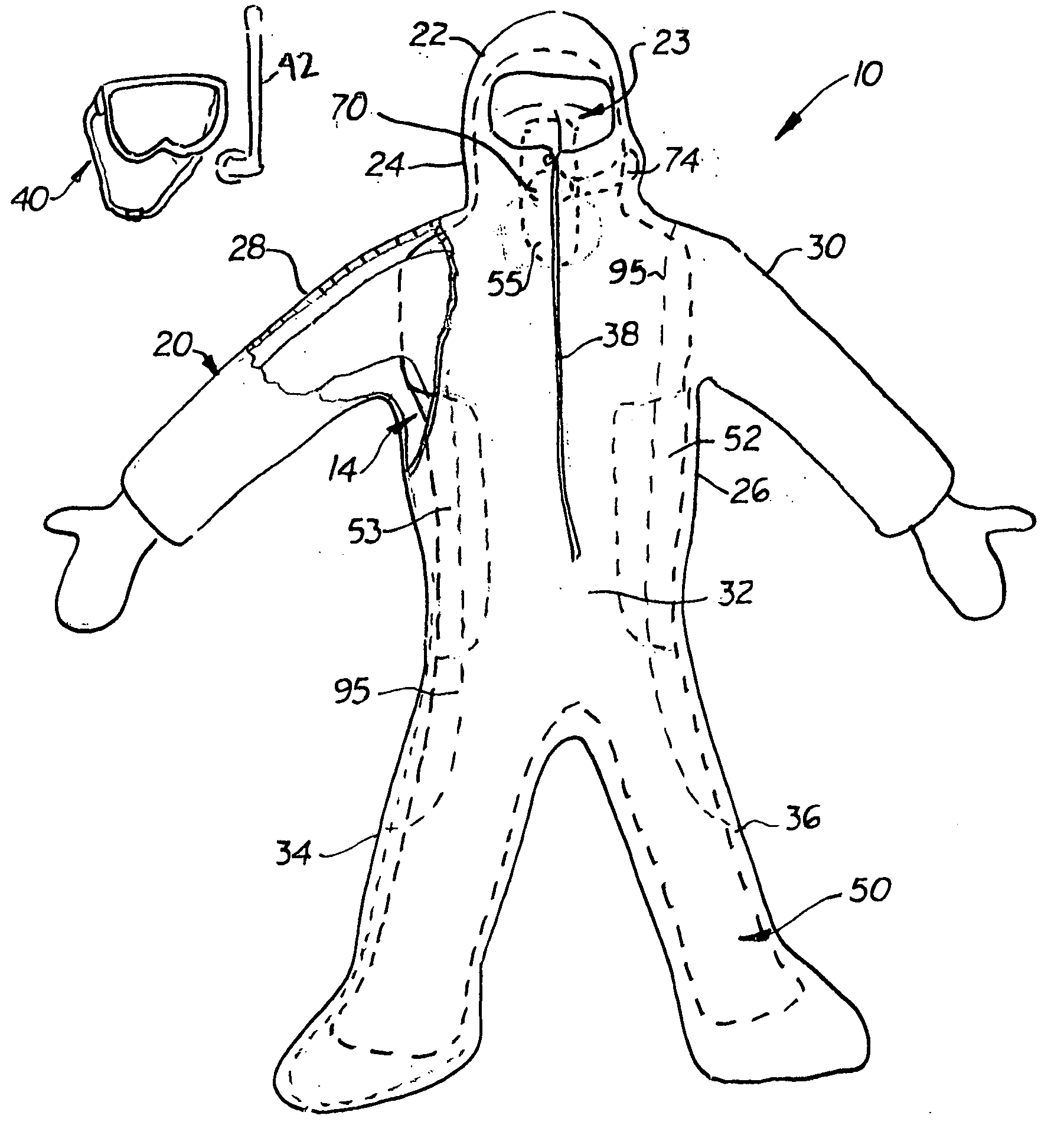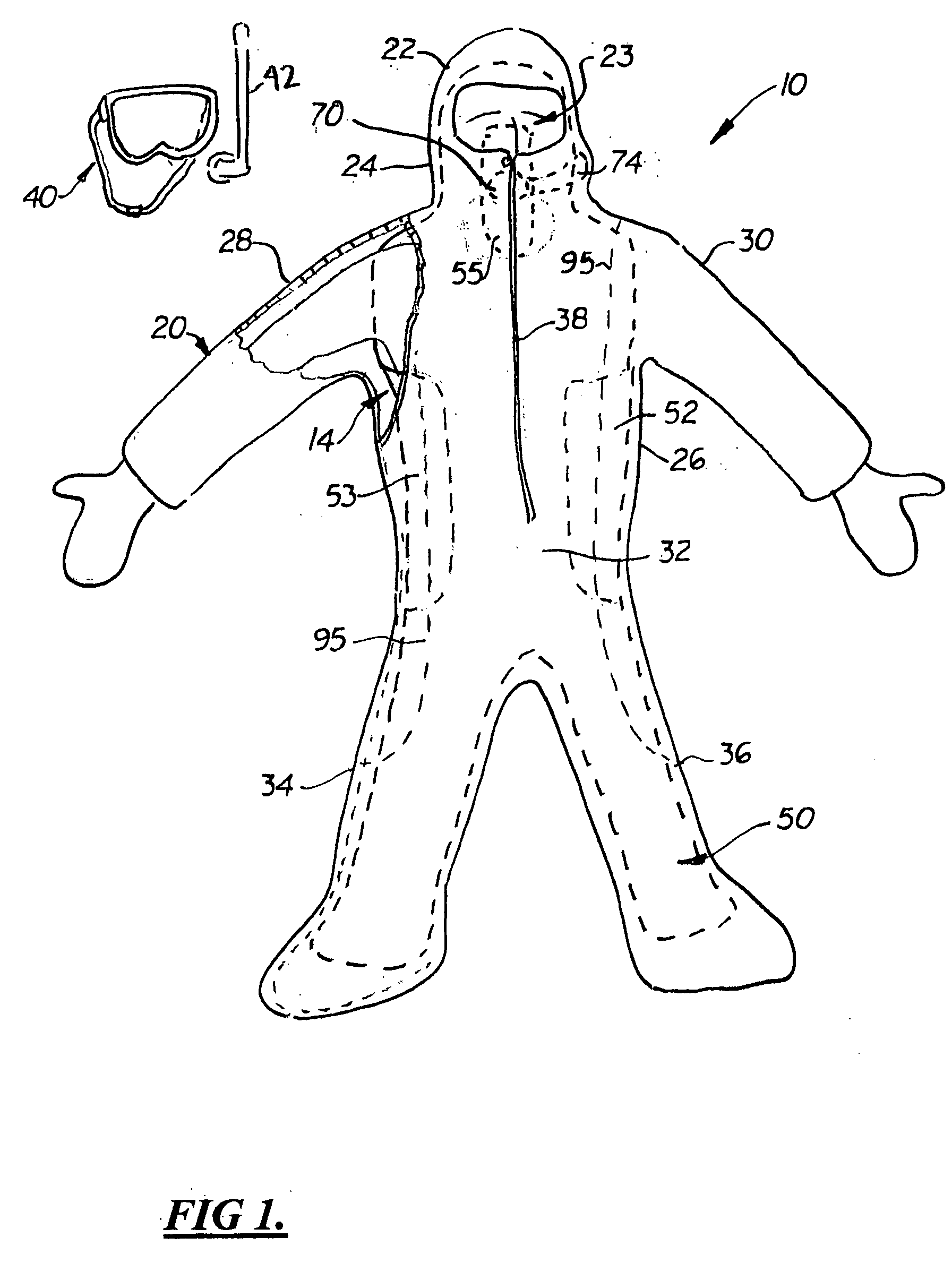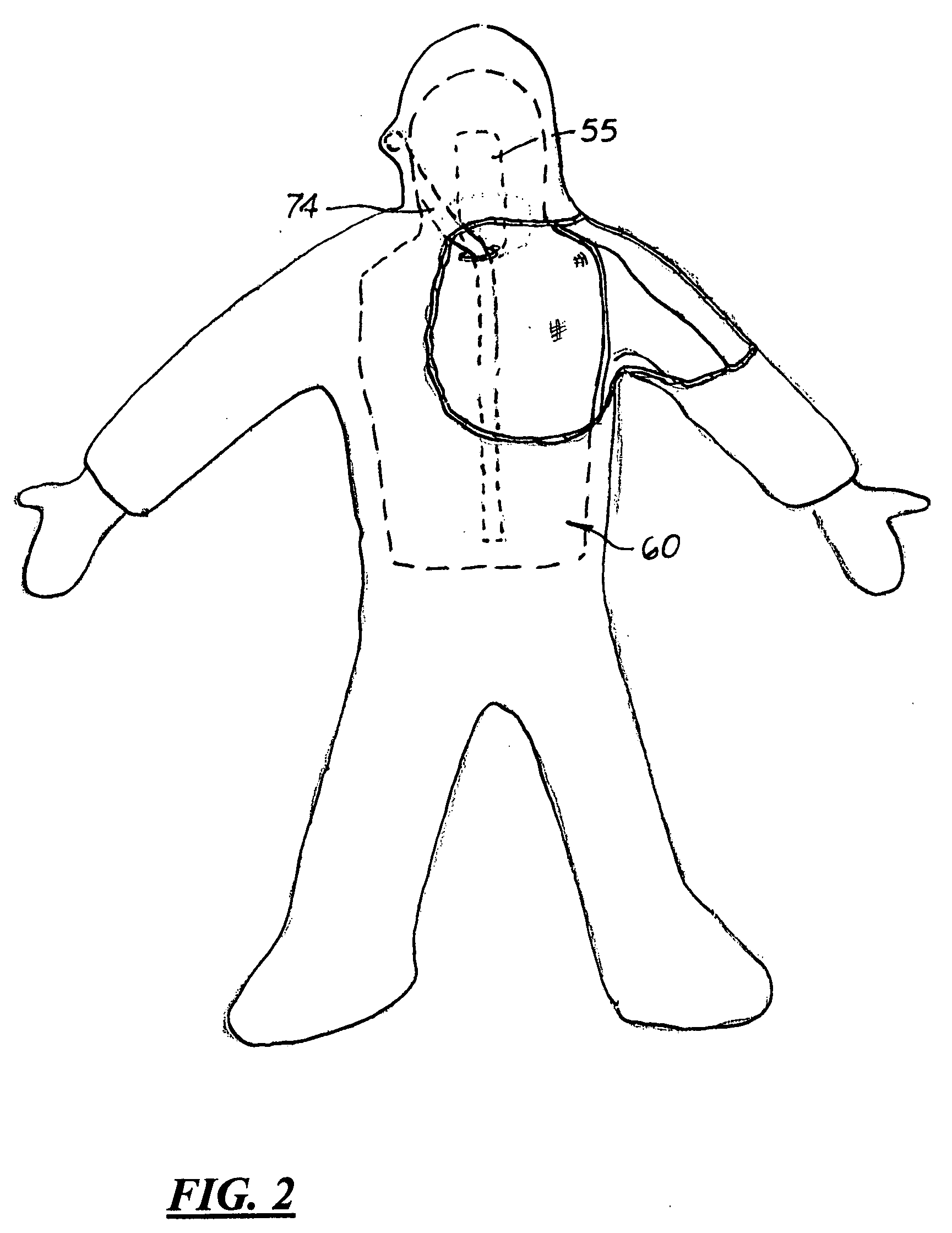Survival suit
a technology for survival suits and suits, applied in the field of survival suits, can solve the problem that survival suits only offer limited protection against hypothermia, and achieve the effect of more rigidity
- Summary
- Abstract
- Description
- Claims
- Application Information
AI Technical Summary
Benefits of technology
Problems solved by technology
Method used
Image
Examples
Embodiment Construction
)
[0021] There is shown in the accompanying Figs. A survival suit 10 including a one-piece outer shell 20 that includes a head section 22, a neck section 24, an upper thoracic section 26, two arm sections 28, 30, an abdominal section 32, and two leg sections 34, 36. Manufactured in the upper thoracic and abdominal sections 26, 32, respectively, is a longitudinally aligned front opening 38 that enables the suit 10 to be easily opened so that the wearer 90 can enter or exit the suit 10. Formed on the head section 22 is a small face opening 23 which enables the wearer 90 to see and breathe. Disposed around the face opening 23 is an optional facemask 40 and snorkel 42.
[0022] The suit 10 includes a first inner bladder 50 located inside the outer shell 20 directly behind the wearer 90 when worn. The first inner bladder 50 acts as an insulation layer that extends from the back of the head, over the back and legs, and to the two ankles. In the preferred embodiment, the first inner bladder 50...
PUM
 Login to View More
Login to View More Abstract
Description
Claims
Application Information
 Login to View More
Login to View More - R&D
- Intellectual Property
- Life Sciences
- Materials
- Tech Scout
- Unparalleled Data Quality
- Higher Quality Content
- 60% Fewer Hallucinations
Browse by: Latest US Patents, China's latest patents, Technical Efficacy Thesaurus, Application Domain, Technology Topic, Popular Technical Reports.
© 2025 PatSnap. All rights reserved.Legal|Privacy policy|Modern Slavery Act Transparency Statement|Sitemap|About US| Contact US: help@patsnap.com



